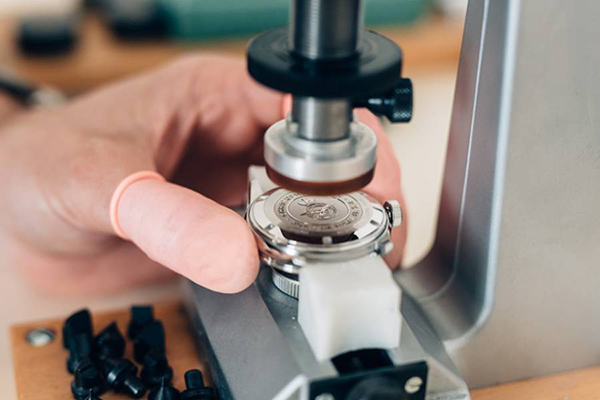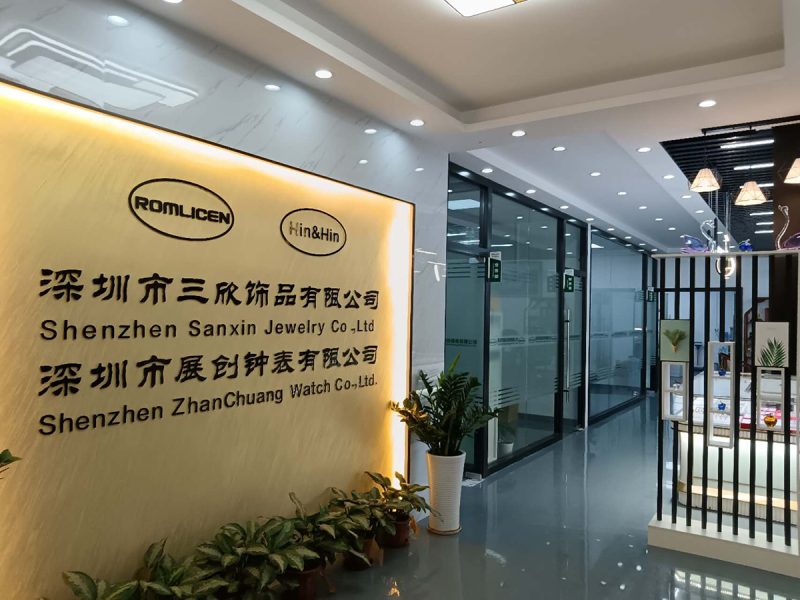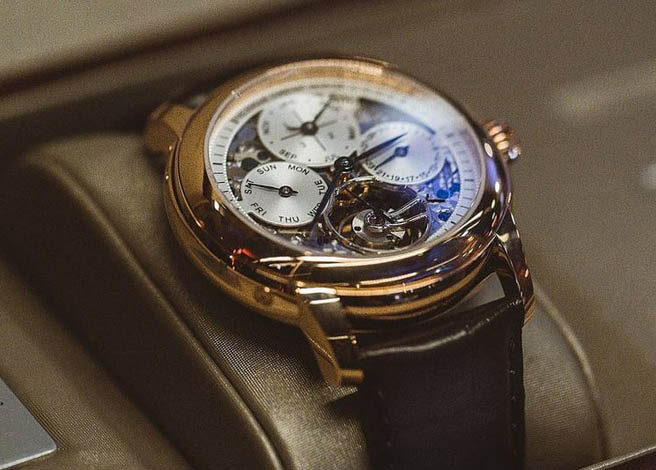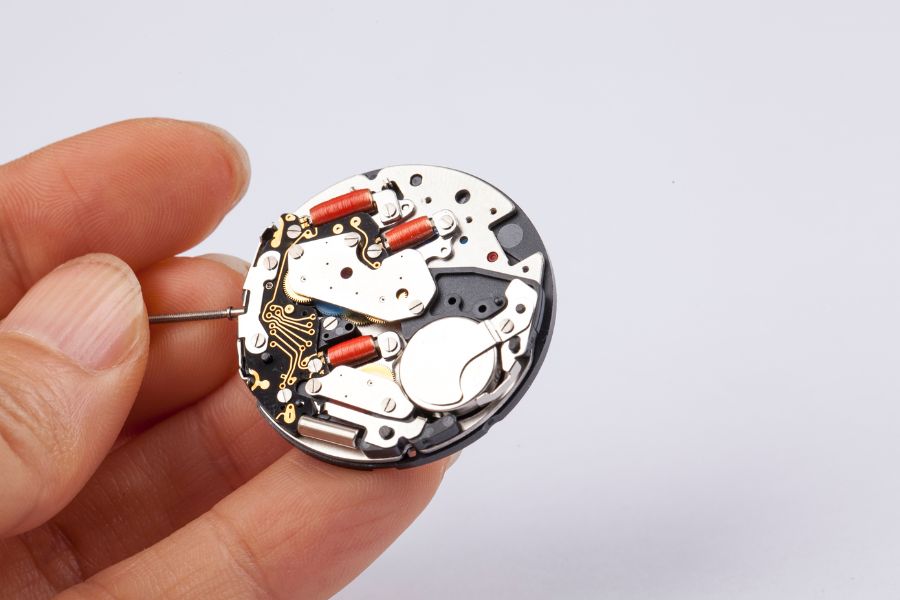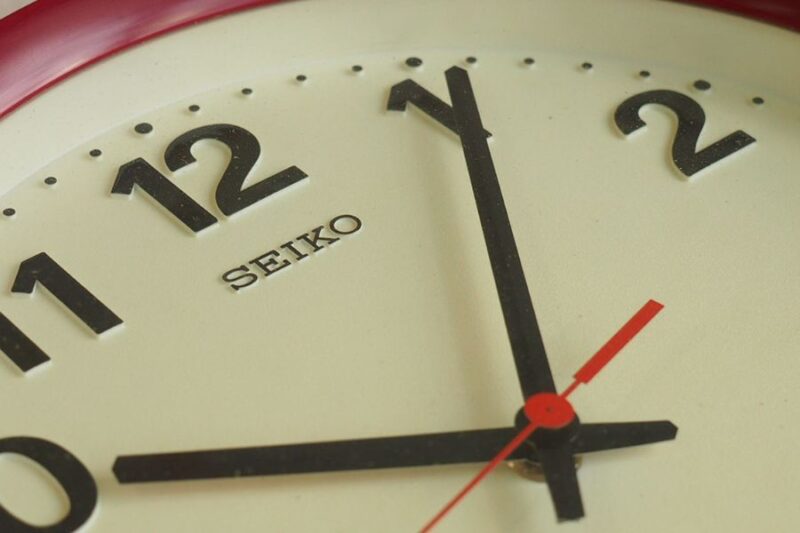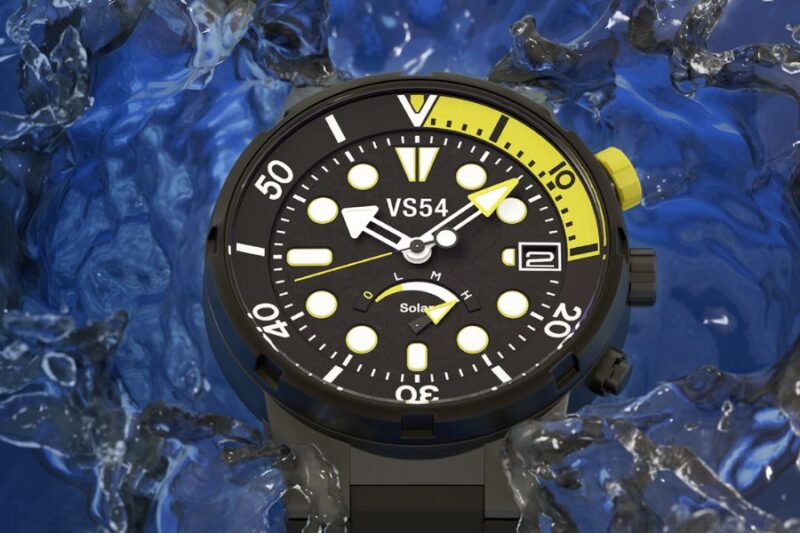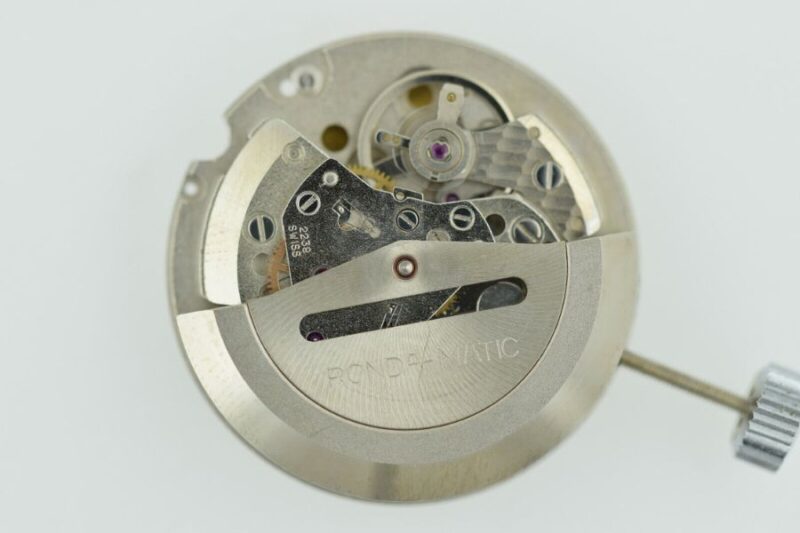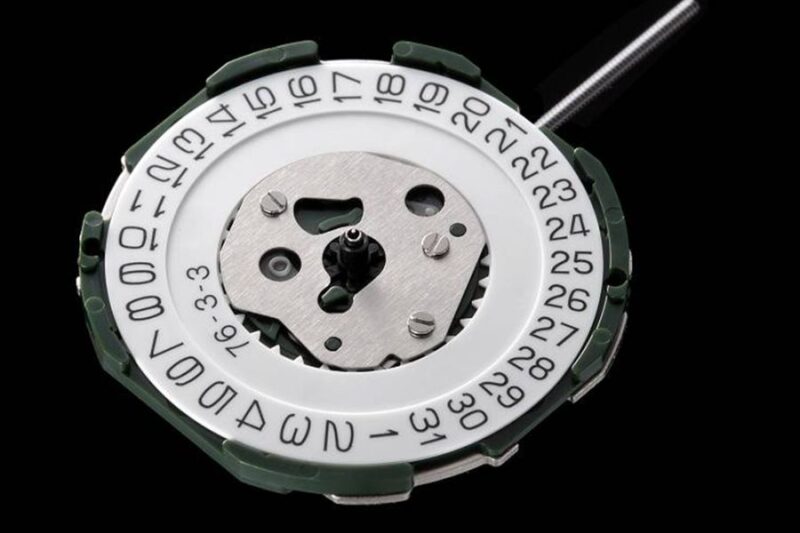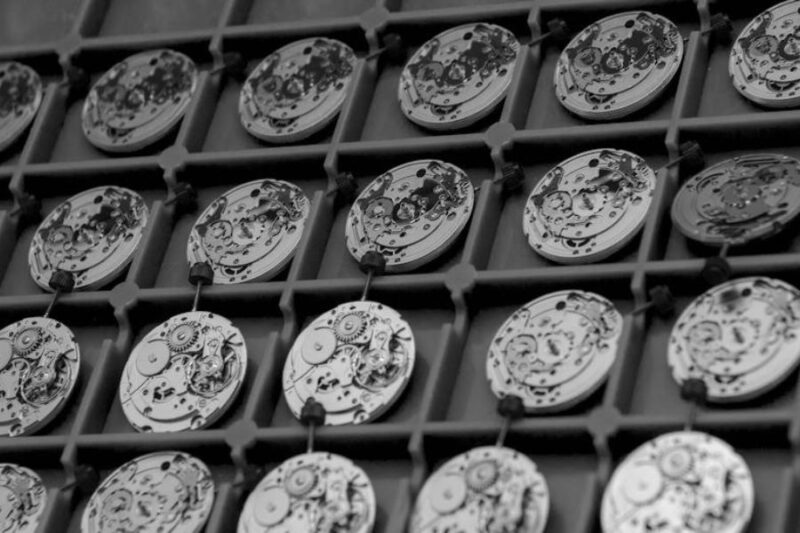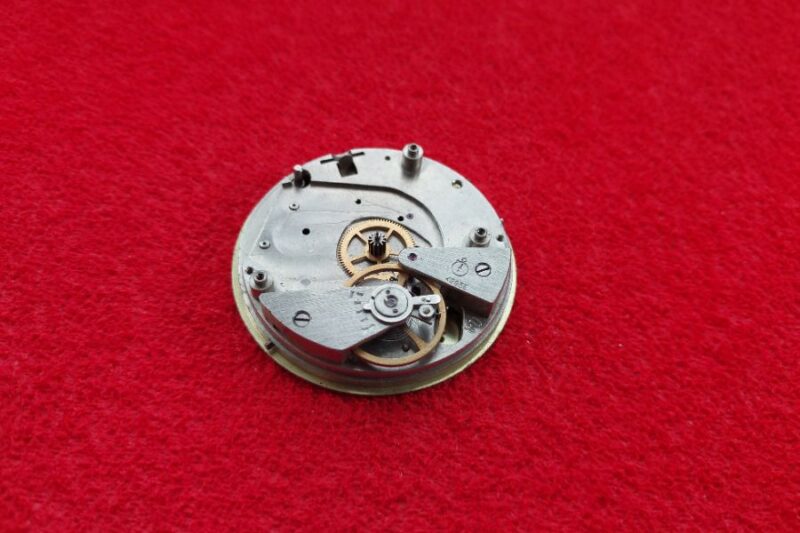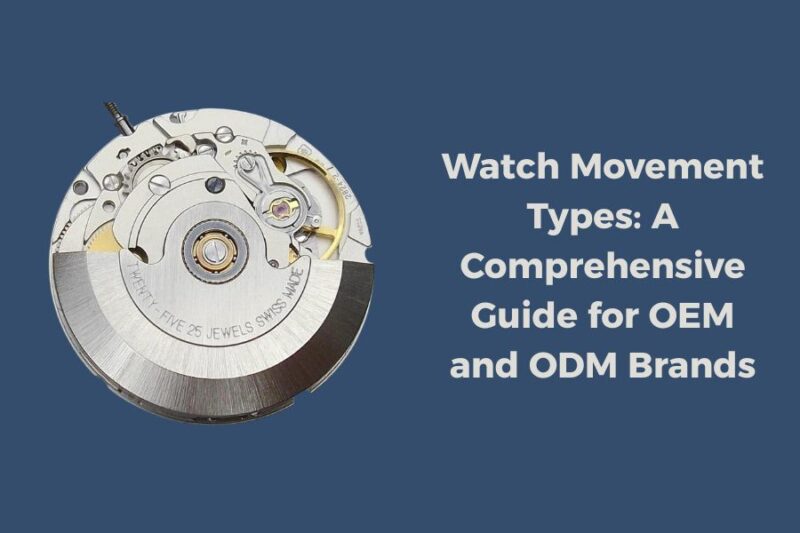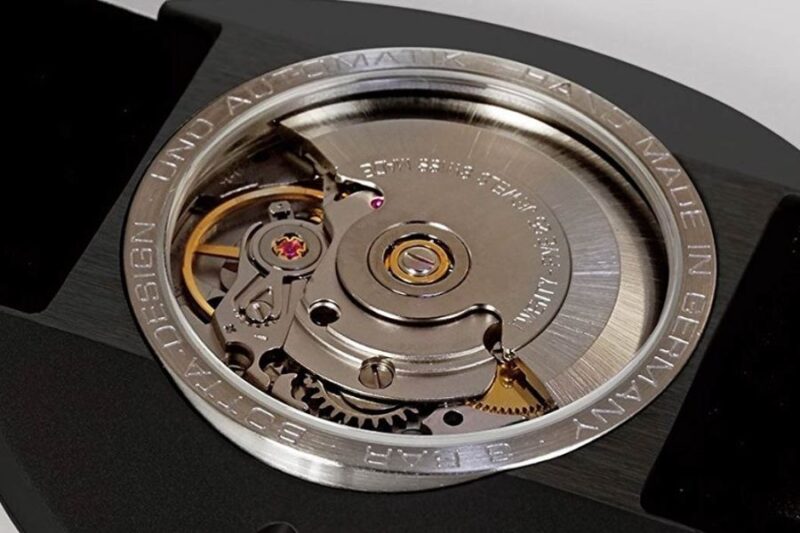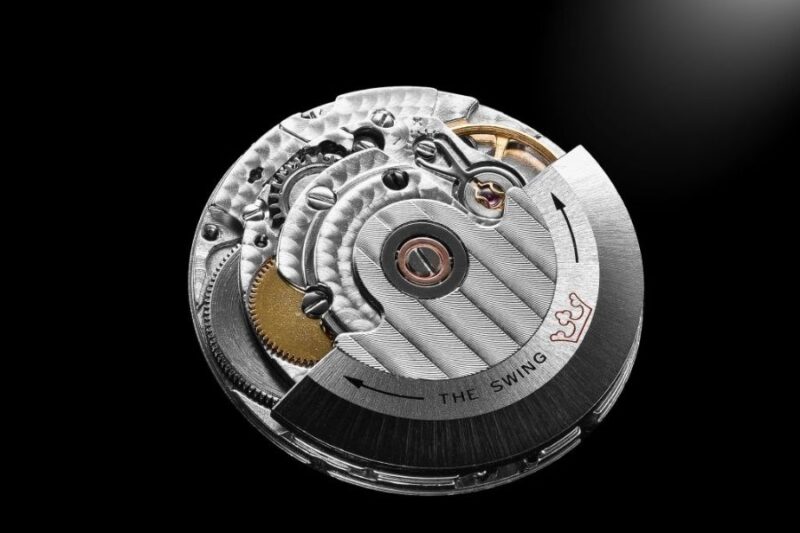Table of Contents
Introduction
Quartz movement is a cornerstone of modern watchmaking, renowned for its precision, reliability, and versatility. As a leading OEM and ODM watch manufacturer, Romlicen leverages quartz movements to deliver high-quality private label and custom logo watches for B2B clients, including fashion brands and retailers. This article explores what a quartz movement is, how it functions, and why it remains a preferred choice for brands seeking cost-effective, accurate timepieces. From its technical foundations to its applications in customized watch designs, we provide expert insights to guide your next watchmaking project.
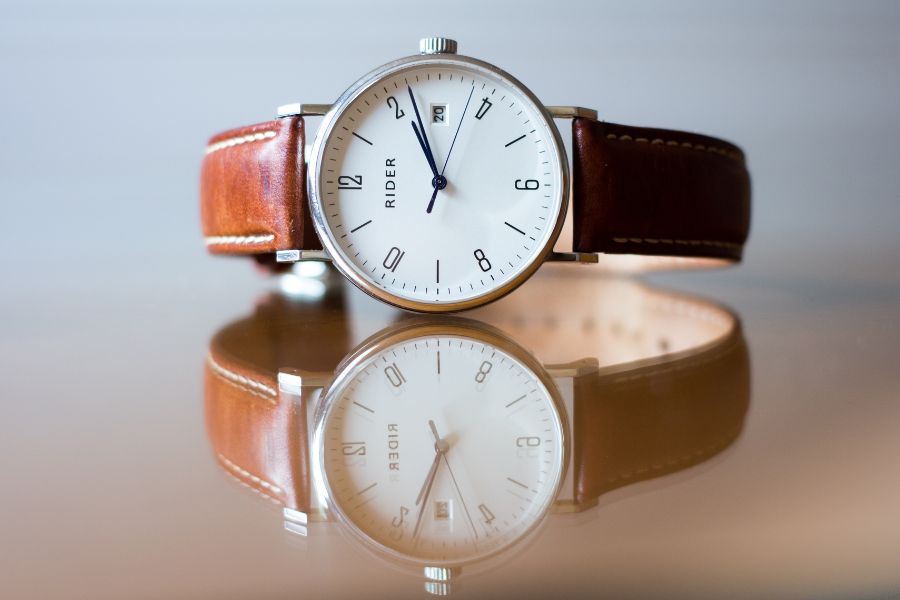
What Is a Quartz Movement?
A quartz movement is an electronic watch mechanism that utilizes a quartz crystal oscillator to maintain precise timekeeping. Introduced in 1969 by Seiko, this innovation transformed the watchmaking industry by offering superior accuracy, affordability, and reliability compared to traditional mechanical movements. Unlike mechanical watches, which depend on a wound mainspring and intricate gear systems, quartz movements are powered by a battery and require minimal maintenance.
The construction of a quartz movement consists of several key components working in harmony:
- Battery: Supplies power to the circuit and oscillator, typically lasting 2-5 years.
- Quartz Crystal: A small, fork-shaped crystal that vibrates at a consistent frequency of 32,768 Hz when subjected to an electric current.
- Integrated Circuit (IC): Processes the crystal’s vibrations into regular electrical pulses, serving as the movement’s control center.
- Stepper Motor: Converts electrical pulses into mechanical motion to drive the gear train.
- Gear Train and Hands: Transmits motion to the watch hands, ensuring accurate time display.
At Romlicen, we incorporate high-quality quartz movements from renowned brands such as MIYOTA, RONDA, and EPSON into our OEM and ODM watch designs. These movements are particularly suited for private label watches, enabling B2B clients to achieve consistent performance while customizing elements like logos on dials, crowns, casebacks, or straps. The compact and durable nature of quartz movement components allows for versatile designs, accommodating materials like 316L stainless steel, titanium, or CuSn8 bronze.
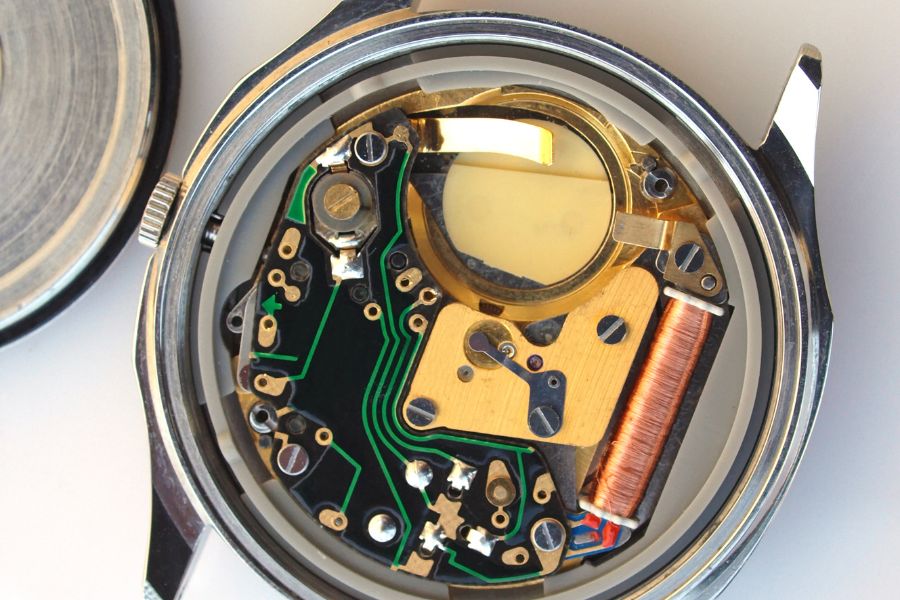
How Do Quartz Watches Work?
A quartz movement achieves precise timekeeping through the coordinated interaction of its electronic and mechanical components. Unlike mechanical movements, which rely on a mainspring, quartz movements utilize a battery-powered electronic oscillator regulated by a quartz crystal. This process, rooted in the piezoelectric properties of quartz, ensures exceptional accuracy, typically within ±15 seconds per month. Below, we outline the four key steps that define how quartz watches work:
- Battery Power Initiation: The battery, typically a silver-oxide cell, delivers a stable electric current to the integrated circuit and quartz crystal. This power source ensures consistent operation, with most batteries lasting 2-5 years.
- Quartz Crystal Oscillation: The quartz crystal, cut into a precise tuning-fork shape, exhibits the piezoelectric effect—generating an electric charge when mechanically stressed and vibrating when subjected to an electric current. It oscillates at a frequency of 32,768 Hz, producing consistent electrical pulses.
- Pulse Regulation by Integrated Circuit: The integrated circuit processes the crystal’s high-frequency pulses, dividing them into one-second intervals through digital counters. This ensures precise, evenly spaced pulses are sent to the stepper motor.
- Mechanical Motion via Stepper Motor: The stepper motor converts electrical pulses into incremental rotations, driving the gear train and moving the watch hands for accurate time display.
The efficiency of quartz movement components allows for compact designs and minimal energy consumption, making them suitable for a wide range of watch styles and applications.
Quartz vs. Mechanical Movement: What’s the Difference?
Understanding the differences between quartz and mechanical movements is essential for brands selecting the right timekeeping mechanism. A quartz movement, powered by a battery and regulated by a quartz crystal oscillator, offers unmatched accuracy and low maintenance. In contrast, a mechanical movement, driven by a wound mainspring and gear system, is valued for its craftsmanship. Below, we compare their key characteristics:
| Feature | Quartz Movement | Mechanical Movement |
|---|---|---|
| Power Source | Battery (2-5 years lifespan) | Mainspring (manual or automatic winding) |
| Accuracy | ±15 seconds per month | ±10-30 seconds per day (varies by quality) |
| Maintenance | Minimal; battery replacement every 2-3 years | Regular servicing every 3-5 years |
| Cost | Cost-effective, ideal for bulk production | Higher cost due to complex assembly |
| Aesthetic Appeal | Sleek, modern; suits versatile designs | Traditional, showcases intricate craftsmanship |
| Durability | Highly reliable, less susceptible to shock | Sensitive to shock, requires careful handling |
Advantages of Quartz Movements
Quartz movements excel in precision and affordability, making them ideal for brands prioritizing consistency and scalability. Their battery-powered operation eliminates frequent winding, and their robust design withstands daily wear. For clients, quartz movements are well-suited for custom logo quartz watches, supporting cost-effective production.
Advantages of Mechanical Movements
Mechanical movements are celebrated for their artistry and longevity. Hand-wound or automatic, they appeal to enthusiasts who value intricate mechanics visible through exhibition casebacks. However, their higher costs and maintenance needs make them less practical for large-scale custom projects.
Choosing the Right Movement
The choice between quartz and mechanical movements depends on a brand’s target market and design goals. Quartz movements are optimal for affordable, accurate watches for broad consumer bases, while mechanical movements suit niche markets valuing tradition.
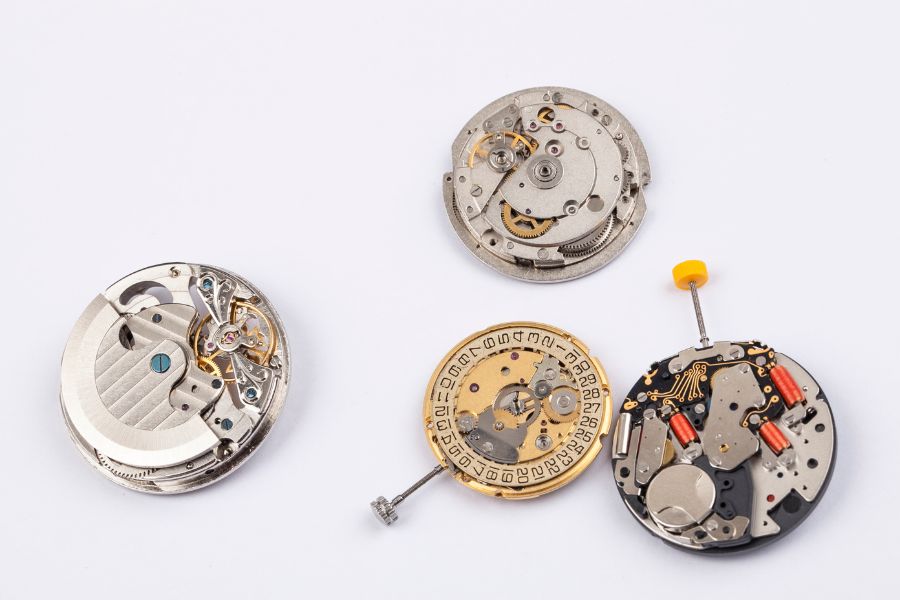
Why Choose Quartz Movements for Private Label Watches?
Quartz movements are a cornerstone for private label watches, offering precision, affordability, and versatility that align with B2B clients’ needs. Their reliable performance and cost-effective production make them ideal for brands launching customized timepieces. Below, we explore why quartz movements are preferred for private label and custom logo quartz watches.
Cost-Effectiveness for Scalable Production
Quartz movements are less expensive to produce than mechanical movements, enabling economies of scale without sacrificing quality. The streamlined manufacturing process and minimal maintenance reduce production and after-sales costs, allowing competitive pricing for bulk orders.
Reliable Performance for Brand Consistency
With an accuracy of ±15 seconds per month, quartz movements ensure reliable timekeeping that enhances a brand’s reputation. Their battery-powered operation provides convenience for consumers, critical for private label watches where performance reflects brand identity. Romlicen integrates quartz movements from MIYOTA, RONDA, and EPSON, ensuring dependable performance across customized designs.
Versatility in Design and Customization
Quartz movements are compact and adaptable, supporting diverse aesthetics with materials like 316L stainless steel, titanium, or CuSn8 bronze. For custom logo quartz watches, they enable precise branding on dials, crowns, casebacks, or straps. Romlicen’s OEM and ODM services leverage this flexibility to deliver tailored solutions.
Case Study: A Fashion Brand’s Success
Consider a European fashion brand that partnered with Romlicen to launch 2,000 quartz watches with MIYOTA movements and custom logos on dials and buckles. The quartz movements ensured a competitive price point and strict quality standards, leading to a sell-out within three months.
Meeting Market Demands
Quartz movements meet consumer demand for accurate, stylish, and affordable watches. Their durability and low maintenance make them suitable for everyday wear, appealing to broad markets and ensuring success for clients.
Quartz Movement Lifespan and Maintenance
The longevity and minimal maintenance of quartz movements make them reliable for watch brands delivering consumer-friendly timepieces. Understanding their lifespan and care is critical for B2B clients to ensure private label watches maintain performance.
Lifespan of Quartz Movements
Quartz movements typically last 10-15 years or more, depending on component quality. The battery, a silver-oxide cell, lasts 2-5 years. High-quality movements from MIYOTA or RONDA incorporate robust circuits and motors, with fewer moving parts than mechanical movements, reducing wear and enhancing durability.
Maintenance Requirements
Quartz movements require minimal upkeep compared to mechanical counterparts. Key practices include:
Battery Replacement: Replace every 2-3 years to prevent leakage, using professional servicing to maintain water resistance.
Environmental Protection: Avoid extreme temperatures (below 0°C or above 60°C) or strong magnetic fields to protect the quartz crystal and motor.
Regular Cleaning: Clean the case and strap to prevent dust or moisture ingress, especially for lower water resistance ratings.
Implications for B2B Clients
The extended lifespan and low maintenance of quartz movements reduce customer complaints and after-sales costs. Their durability supports a positive brand image, and simple care instructions enhance the consumer experience, making quartz movements ideal for diverse markets.
Frequently Asked Questions (FAQ)
To address common queries, we’ve compiled answers to questions about quartz movements, providing clarity for watch brands and consumers.
A quartz movement lasts 10-15 years or more, with the battery requiring replacement every 2-5 years. With fewer moving parts, quartz movements are less prone to wear, ensuring durability for everyday use.
Quartz movements offer superior accuracy (±15 seconds per month) and minimal maintenance, ideal for cost-effective watches. Mechanical movements (±10-30 seconds per day) are valued for craftsmanship, appealing to traditionalists. Quartz is often best for private label watches targeting broad markets.
Quartz watches are highly accurate, deviating by ±15 seconds per month due to the quartz crystal’s 32,768 Hz oscillation. Compared to mechanical watches, quartz movements deliver reliable timekeeping for various settings.
Quartz movements are used in luxury Horragadoes (used in luxury watches, valued for precision and modern design. Combined with premium materials like 904L stainless steel or titanium, they suit upscale private label collections.
Conclusion
Quartz movements combine exceptional accuracy, reliability, and affordability, making them ideal for private label quartz watches. For B2B clients, such as fashion brands and retailers, quartz movements offer a cost-effective solution to create custom logo quartz watches that align with brand identity and consumer demands.
At Romlicen, we specialize in OEM and ODM watch manufacturing, using high-quality quartz movements from MIYOTA, RONDA, and EPSON. Our services enable brands to customize logos on dials, crowns, casebacks, or straps, with materials like 316L stainless steel, titanium, or CuSn8 bronze. Explore our Watch Design Service to bring your vision to life. For more insights, read our article on What Is a Mechanical Movement?. Contact Romlicen today to start your private label watch project.
Related Reading
- What is a Japan Movt Watch? A Complete Guide to Japanese Movement Timepieces
- Ticking Styles: Exploring the Different Type of Watches Movement
- Parts of a Watch: A Comprehensive Guide to Watch Anatomy
- Understanding Watch Complications: A Brand’s Guide to Custom Watch Manufacturing
- Choosing the Right Custom Watch Manufacturer: A Key to Brand Success
- How to Choose the Perfect Movement for Your Custom Automatic Watch
- Exploring the Benefits of Swiss, Japanese, and Chinese Watch Movements
- A Comprehensive Guide to Watch Movements
- Why Private Label Watches Are the Best Choice for Your Watch Brand
- A Comprehensive Guide to Chinese Watch Movements
- Swiss Watch Movements: Precision Watchmaking Guide
- Watch Movement Types: Ultimate Guide for Brands
- Ultimate ETA Watch Movements Guide for OEMs
- Sellita Watch Movement: Precision & Quality
- Seiko Watch Movement: Precision for OEM Watches
